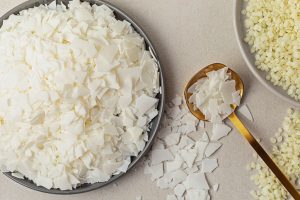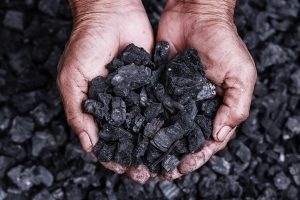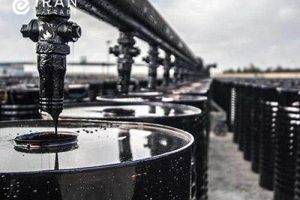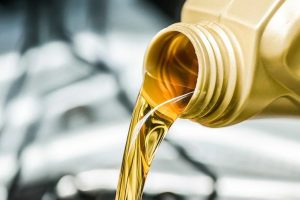Bitumen: What is Bitumen + Examples and Uses!
Bitumen is a precious material used in various industries with lots of value and uses. More than 85% of the world’s bitumen is used for road construction, about 10% in other constructions, and 5% in various industries, including insulation. In this article of Iran E Trade, we will discuss “what bitumen is” and explain the significant points in buying bitumen and its price.
Bitumen price: What is bitumen and its types
What is vacuum bottom ? The residue of bitumen distillationis known as vacuum bottom, which is used to produce bitumen.
Bitumen is a material that is produced through the distillation of crude oil. This material has waterproof properties and high adhesion. Bitumen is a mixture of dark organic liquids, high adhesion and viscosity, and has a black or dark brown color. The natural bitumen is known as crude bitumen, and the petroleum bitumen obtained from the distillation of crude oil is called refined bitumen. Bitumen price depends on the type of bitumen and its different uses.
(Click to learn about Vacuum Bottom Bitumen.)
Oil bitumen is a viscous substance that exists in liquid to semi-solid phases. In general, bitumen is composed of asphaltene resin and other petroleum compounds, and different compounds of bitumen give it different properties.

What is industrial bitumen?
Industrial bitumen is a dark petroleum residue modified by an oxidation process. The consistency of this type of bitumen varies from very viscousous to solid bitumen. Industrial bitumen is a safe and cheap material with many uses in the industry, and its features include waterproofness, high adhesion, and resistance to acid and alkali. In addition, this type of bitumen is also an effective electrical insulator because it has excellent dielectric strength.
(Click to learn about viscosity grade bitumen .)

Bitumen Price and Bitumen Applications
Another application of bitumenis as an adhesive bitumen used in road projects.
Bitumen has several modern uses. In general, this product has industrial usees like paving roads. In order to use bitumen in road construction, pure bitumen or a combination of bitumen and aggregates such as concrete is often used.
(Click to learn about the uses of bitumen in various industries.)
Another significant application of bitumen is using this material as a waterproof. For example, bitumen has uses in waterproofing boats and ships or roofs and sides of the buildings. In the past, bitumen was used for the roof to prevent water from entering the house.

How is bitumen made?
The first question is “how bitumen is produced“, or “what is bitumen made of?” In general, bitumen is found in nature and can be extracted from crude oil.
(To learn more about the introduction of Iranian bitumen refineries, click here.)

Bitumen with natural origin – Gilsonite
Natural bitumen or gilsonite has many impurities, including sulfur and heavy metals, and the cost of extracting this mineral bitumen will be higher than the bitumen obtained from crude oil. Natural or mineral bitumen is used as an additive for waterproof coating, drilling and road construction.
What is natural bitumen? Natural bitumen is a type of bitumen that exists naturally in nature. But how is natural bitumen formed? Millions of years ago, microscopic algae (diatoms) were buried beneath sedimentary rocks in swamps and other aquatic habitats. These residues were transformed into natural bitumen under the pressure of the upper sedimentary layers and the temperature above 50 degrees Celsius.
Today, natural bitumen is found in oil hills and lakes. The most sources of bitumen are located in Canada, Venezuela and Oman, and there are natural bitumen mines in the west of Iran, which have different ash content.
(Click to find out the latest bitumen price.)

Bitumen obtained from crude oil distillation
Crude oil is the primary source of bitumen for industry. It is a mixture of different compounds separated by a distillation tower. The remains of the distillation tower, called vacuum batuums, are used for processing and conversion to bitumen.
Different types of bitumen, including penetration bitumen or oxidized bitumen (blown bitumen), are produced by various processes in the vacuum floor in the refinery. The significant use of bitumen obtained from crude oil distillation is in road construction.

Types of bitumen and their uses
Other bitumen grades, including cutback bitumen, blown bitumen, and bitumen emulsion, are classified according to their production process. Read more about bitumen and its types.
Since different types of crude oil can produce various bitumen with entirely different properties, bitumen grading is critical. In general, refineries use a number of standard tests to measure the level of viscosity, amount of penetration, yield and consistency of the bitumen. The results of these tests are the degrees of bitumen penetration and the degree of viscosity.

Types of bitumen: 1. Gilsonite
Gilsonite, or natural bitumen, has uses in the printing industry, painting industry, mud and cement drilling, asphalt and road construction, chemical products, bitumen quality improvement, etc.
Gilsonite is a type of natural bitumen with a shiny, smooth, and solid appearance. Gilsonite types are classified based on their ash content and solubility in organic solvents. Since this material is hard and brittle, it is often used in powder form. The composition of Gilsonite is close to refinery bitumen.
Sometimes, the combination of Gilsonite with refined bitumen has uses in the road construction industry. However, natural bitumen has a very high resistance to water penetration, and its degree of penetration and deformation is low.

Bitumen types: 2. Penetration Grade
To use penetration bitumen in the road construction industry, you should pay attention to the average temperature of the area and the amount of traffic on it because different grades of this bitumen are different.
Penetration Grade Bitumen is the most widely used bitumen for road construction, which is classified after production in the refinery by bitumen permeation test using a permeameter device. The deeper the needle penetrates the bitumen surface, the softer the bitumen and the more suitable it will be for any cold.
The most widely used bitumen for road construction is penetration bitumen with grade 60/70 and then grade 80/100. In addition, bitumen grade 60/70 is widely used as a waterproofing material in buildings.

Bitumen types: 3. Viscosity Grade
Viscosity grade bitumen is classified based on its viscosity after bitumen production in the refinery. This classification is almost newer than the penetration bitumen classification. Bitumen viscosity has four different grades, which are VG10, VG20, VG30 and VG40, and each has a distinct application.
- Bitumen VG-10: suitable for road construction in cold regions and use in the production of emulsion bitumen
- Bitumen VG-20: use in cold regions for road construction
- Bitumen VG-30: increasing asphalt performance in hot areas
- Bitumen VG-40: suitable for areas with high traffic load and road construction in tropical regions

Advantages of Viscosity Grade Bitumen
As we said, viscosity grading is newer than bitumen penetration rating. The reason for using viscosity rating instead of penetration rating is because of the change in bitumen viscosity at high temperatures. But what are the advantages of viscosity bitumen to penetration bitumen?
This grading system is designed to increase bitumen accuracy at high temperatures. A particular grade of penetration bitumen may show different results at a specific temperature, but the bitumen viscosity always behaves the same.
When there is a need to predict the behavior of bitumen in the hottest time of the year, and its properties in standard weather conditions, bitumen viscosity is a better choice. Since the viscosity test is based on testing the bitumen properties at three different temperatures (25°C, 60°C and 135°C), all grades of viscosity bitumen are easier to use.

Bitumen types: 4. Emulsion
Emulsion bitumen gets its name from the way it is produced. This type of bitumen is a chemical combination of bitumen and water. This type of bitumen has entered the industry to prevent the environmental damage of soluble (cutback) bitumen, because water is a reliable alternative to organic solvents for diluting bitumen sufficiently for specific applications.
Emulsion bitumen is useful for waterproofing, spraying and adhesion of asphalt pavement layers, and it is economical and safe to transport, move and maintain.

Classification of bitumen emulsion
Emulsion bitumen is classified based on two factors:
- Electrostatic charge of particles: Emulsion bitumen can be anionic (with negative charge) and cationic (with positive charge) according to their electronic charge.
- Breaking or setting time: This rating is based on the time required for the bitumen emulsion to lose its water and become sufficiently tacky to adhere to the aggregate.
Different grades of emulsion bitumen have diverse properties; Therefore, each type will be suitable for a specific application. Three factors of viscosity level, setting time and electronic charge of bitumen particles affect the grade and type of bitumen emulsion. Emulsion bitumen is less sticky than other bitumen grades because it is mixed with water and emulsifier.
Emulsion bitumen is ideal for pavement maintenance and rehabilitation of old roads, but in today’s industry it is also used for adhesive coatings, chip sealing, grout sealing and micro surfacing.

Types of bitumen: 5. Soluble or cutback
This type of bitumen is used in industries requiring bitumen with low viscosity. Cutback bitumen can also be used in cases where bitumen cannot be preheated to make asphalt. Penetration bitumen is mixed with organic solvents in a certain amount to prepare soluble or cutback bitumen. These organic solvents include gasoline, naphtha, diesel, and fuel oil.
Cutback bitumen is suitable for cold climates, and solvents evaporate when using bitumen. This type of bitumen is proper for primary sealing and spray sealing. The only concern is the damage of this type to the environment.

Types of bitumen: 6. Oxidized or blown
Blown or oxidized bitumen is obtained in the refinery by blowing hot air into the penetration bitumen. The obtained bitumen is chemically stable and has high durability. It is also impermeable to water and suitable for insulation. Blown bitumen has a lower degree of penetration and a higher degree of softening point and is classified based on these two characteristics.
The applications of blown bitumen include waterproofing in dam construction projects, buildings, etc. Also, this bitumen is used in the construction of roads in combination with other types of bitumen. In other industries, especially oil and gas, it covers pipelines to prevent corrosion.

Bitumen types: 7. Performance Grade
Bitumen performance grade or PG bitumen is a type of bitumen that is graded based on the performance of bitumen at different temperatures. A bitumen that can withstand a wide range of temperatures is more suitable. Classification of PG bitumen is done at high and low temperatures.
The main issue with high-temperature performance is bitumen cracking or rutting, which usually takes some time for the bitumen to set and then some time for the rutting to disappear. Cracking is likely to increase at low temperatures.
The average maximum and minimum temperature of the environment where the asphalt is made is selected to evaluate the bitumen performance. The bitumen is exposed to these two temperatures for a week then. The average high and low temperatures are considered to be 6 degrees Celsius higher each.

The temperature of functional bitumen
The high temperature in these grades is between 46-82 degrees Celsius, and the low temperature is between – 46 to – 10 degrees Celsius. Grading bitumen is based on a positive number and a negative number, which indicates the maximum and minimum temperature.
For example, PG bitumen 64-10 produces a coefficient of performance at a seven-day maximum pavement temperature of 64°C and a minimum pavement temperature of minus 10°C. If the sum of the upper and lower temperature numbers is greater than 90, it is modified polymer bitumen, and less than 90 is unmodified polymer bitumen.
Thermal cracking occurs less in PG grades 58-34, 64-22, 64-28 and 22-76. Additionally, PG grades 22-70, 28-70, 28-76 and 22-82 are more resistant to rutting.
Performance grade bitumen is usually used in construction and pavement reconstruction, sealing edges, sealing cracks in dense and open hot mix asphalt.

What is polymer bitumen?
Nano polymer elastic bitumen is used for asphalt staining, bathroom insulation, sealing, etc.
Polymer bitumen, polymer modified bitumen (PMB), is one of the designed and engineered bitumens. Nano polymer bitumen is used in pavements, roads with heavy traffic and roof insulation to withstand extreme weather conditions.
PMB is a conventional bitumen with added polymer that gives it strength, high adhesion, and resistance to chipping and deformation, making it a desirable material for infrastructure. Some properties of polymer bitumen include the following:
- More strength
- Increased resistance to deformation
- Increased resistance to cracks and separation
- Better water resistance properties
- Higher durability

The difference between bitumen, tar and asphalt
In a country like America, the words bitumen and asphalt are synonymous. Generally, asphalt bitumen composes of aggregate and bitumen, which is used as an adhesive for road construction. Bitumen is a hydrocarbon substance that occurs naturally or is obtained through the refining process of crude oil.
Tar is also a dark hydrocarbon substance, but the difference between bitumen and tar is in the origin of their production. Tar is obtained from wood or coal through a specific distillation process. Of course, coal tar has a lot of benzene, which is carcinogenic. Tar is mostly used in road construction.

Bituminous waterproofing (isogam)
Bituminous waterproofing is an insulation used to cover roofs, swimming pools, and so on. to prevent water penetration. Prefabricated waterproofing has a two-layer structure of tissue and polyester, which is impregnated with bitumen.
Both bitumen and bituminous waterproofing are used to insulating the roof or wall, etc. However, it is more convenient to use bituminous waterproofing. Sometimes, bitumen is used before bituminous waterproofing to increase its adhesion.

What is cold bitumen?
Cold bitumen is a type of bitumen that does not need to be heated for use and can be dissolved in water. Cold polymer bitumen is also strengthened by adding polymers, making the bitumen more resistant to wear, cracking or failure. Cold bitumen and cold liquid bitumen can be used to insulate different environments, asphalt or bituminous waterproofing sealing, swimming pool insulation, roof, wall, etc.

What is mixed bitumen?
Mixed bitumen is a combination of loose and hard bitumen, i.e. 70/60 bitumen and 90/15 bitumen. Mixed bitumen, also known as 25/85 bitumen, has a semi-solid state and is one of the most widely used bitumen in the industry. In fact, mixed bitumen is one of the types of blown or oxidized bitumen, which is created from the vacuum batuum in the distillation tower of the refinery.
Barrel-mixed bitumen has a very high adhesive property and used in various industries. It must be heated until it becomes liquid to use this type of bitumen.

Rubber bitumen
Using pure bitumen is not suitable for modern roads and today’s traffic. Therefore, the bitumen is modified to improve its performance and life span. Bitumen modification can be done chemically or physically. Polymers like thermoplastics, rubbers, and thermosets are very popular physical modifiers.
Rubber is a good option for bitumen modification. Bitumen modified with rubber has improved properties such as lower penetration and higher softening point.

White bitumen
White bitumen or synthetic bitumen is actually naphthalene, also known by other names such as albucarbon and camphor bitumen. This substance is an aromatic hydrocarbon that has a solid form. White bitumen does not dissolve in water, but heating it to 80 degrees Celsius transforms into a liquid state and melts.
This material has an integrated and uniform structure and has high adhesion. Since white bitumen does not dissolve in water, it can be a practical insulation against moisture and water penetration. In addition, white bitumen has high stability and resistance against temperature changes.

Mastic bitumen
Mastic is a material that used for sealing. Among the types of bituminous mastic, we can mention cold mastic bitumen, hot mastic bitumen, etc. Mastics have different uses depending on their type. For example, mastic bitumen has uses in sealing water and sewage channels, sealing tanks, etc.

Bitumen price
Bitumen has various industrial uses, but how much bitumen is per kilo or how much is bitumen per ton? Bitumen price depends on various factors. The main factor affecting the price of bitumen is the price of crude oil and its supply and demand in the market. Iran is one of the principal supplier of bitumen in the Middle East, but what does affect the price of bitumen in the Middle East?
- The world price of oil
- Regional price of fuel oil
- The amount of demand from consumer countries
- Exchange rate of rial against dollar
- Prices of global competitors including Singapore, South Korea, Thailand, Italy and Greece
- Political conflicts, especially conflicts in the Persian Gulf region
- Shipping costs
These factors can all affect the global price of bitumen.

Buy bitumen
Bitumen is one of the most consumed petroleum products, and most of the bitumen is offered for export. The most common industry in which bitumen is used, is the road construction industry. Bitumen coating of roads or waterproofing walls or roofs, is one of the uses of this material.
If you are looking to buy bitumen, you can contact IranETrade Company to buy barreled bitumen in Tehran.

Reference: Wikipedia
- What Is LPG: Properties + Uses Liquefied Petroleum Gas
- What Is Petroleum Paraffin: Types + Properties And Applications
- What is Petroleum Coke: Types + Applications
- What Is Mazut: Advantages, Applications + Hazards
- What Is Diesel fuel: Types Gas oil + Applications
- What is gasoline? Types + Uses and Production Process









